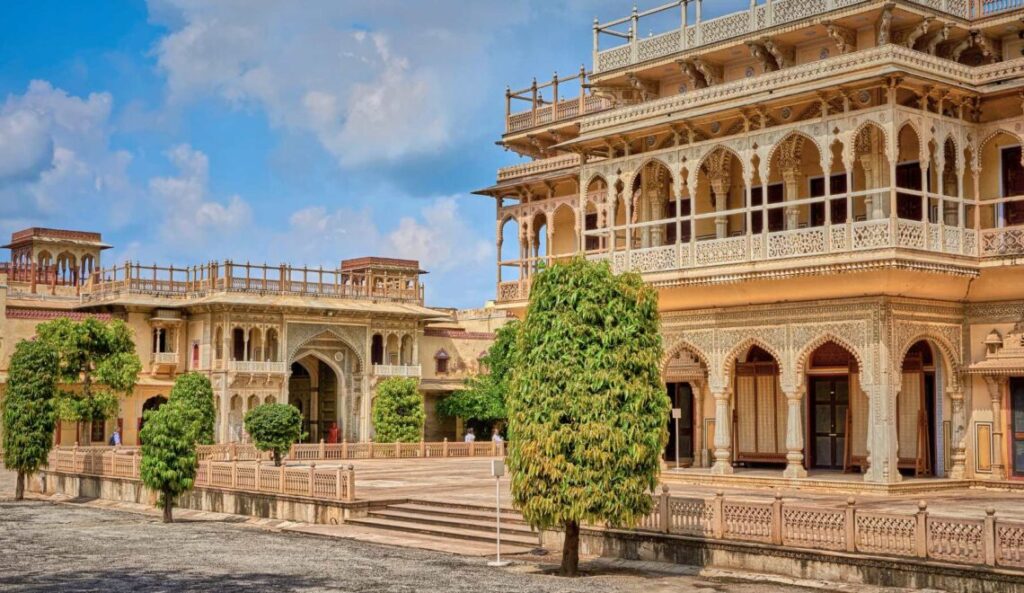In the heart of Rajasthan, Jaipur, also known as the Pink City of India, is a testament to the regal grandeur and vibrant culture of that historical city.
As we journey through the lanes and palaces, we unravel the Jaipur gems—the must-see places that adorn the cityscape like precious jewels, each contributing to the tapestry of Jaipur’s rich heritage.
Join us on a journey as we check out the must-see places—the true gems that adorn the places in the Pink City of India.
However, the very identity of Jaipur is encapsulated in its proud moniker, the Pink City of India. This title is not merely a colour code but a symbol of the city’s royal history.
Further, as you navigate the streets, every corner resonates with the warmth of the pink hue, creating a unique and captivating ambiance synonymous with the Pink City.
In this blog series, we invite you to take a virtual tour of these Jaipur gems, each unfolding a different facet of Pink City’s allure.
Join us as we traverse the historical, architectural, and cultural wonders that make Jaipur a city like no other.
The Pink City and each gem promise to add a new layer to the kaleidoscope of wonders that define the majestic landscape of Jaipur.
1. Hawa Mahal: The Breeze of Architectural Splendor
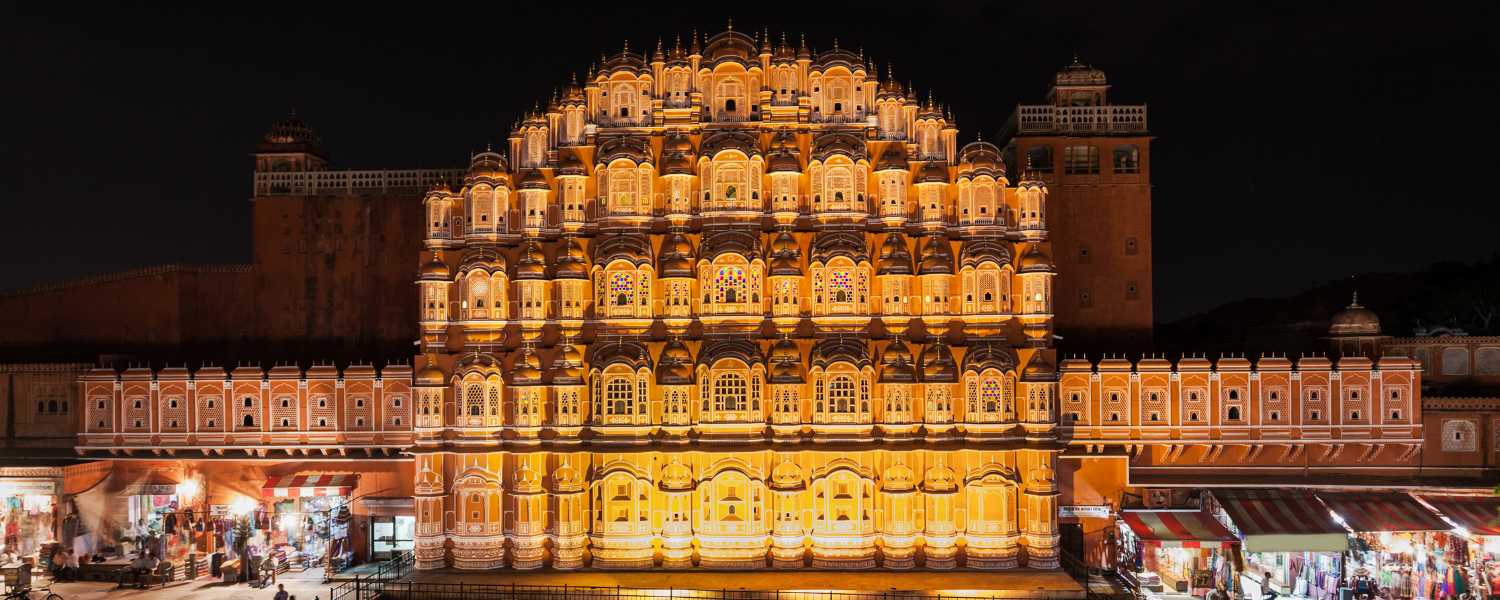
Additionally, our exploration begins with the iconic Hawa Mahal, the Palace of the Winds. While, this architectural marvel, constructed in 1799, manifests Jaipur’s royal past.
The intricate latticework and 953 windows serve as a visual spectacle and capture the essence of the Pink City of India.
Although, the palace’s pink sandstone façade, adorned with delicate honeycomb patterns, creates a breathtaking play of light and shadow, reminiscent of a gentle breeze weaving through the corridors of history.
Moreover, from the ornate Hawa Mahal, also known as the Palace of the Winds, to the grandeur of the City Palace, the historical landmarks are not only testimonies to the city’s regal past but also embody the enduring charm of the Pink City.
2. City Palace: The Royal Residency

However, our journey through Jaipur’s regal gems leads us to the City Palace, a majestic complex that encapsulates the city’s royal heritage.
Whether, as the residence of the Maharaja of Jaipur, the palace boasts a harmonious blend of Mughal and Rajput architecture.
The City Palace is not just a building but a living testament to the grandeur that defines the essence of the Pink City of India.
The City Palace, a harmonious blend of Mughal and Rajput styles, unfolds like a pink-hued dream.
While, each monument, whether it’s the celestial instruments of Jantar Mantar or the imposing walls of Amber Fort, contributes to the symphony, creating a visual feast for those who revel in the architectural wonders of the Pink City.
3. Jantar Mantar: Astronomical Brilliance
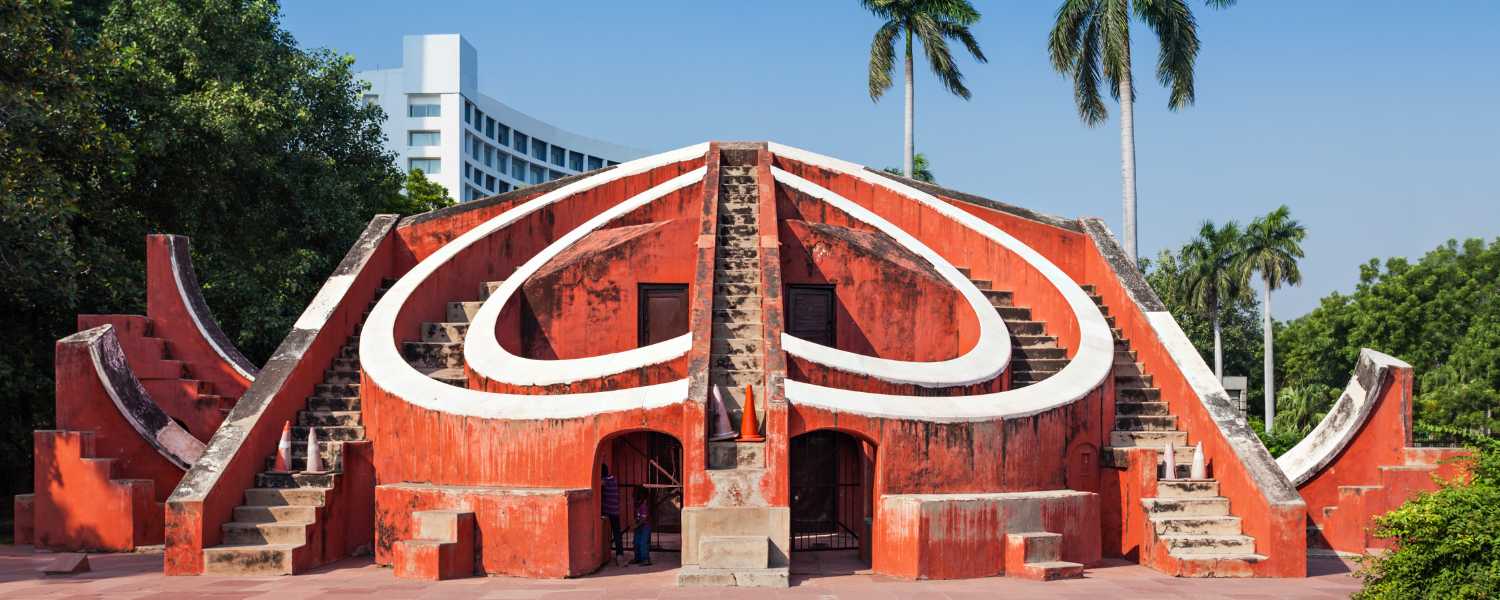
In the heart of Jaipur, the Jantar Mantar is a World Heritage Site, similar to its astronomical brilliance.
Although built by Maharaja Jai Singh II, this observatory is a celestial playground that showcases the scientific understanding of ancient India.
The instruments, made of pink sandstone, stand tall against the sky, aligning with the stars to measure time, predict eclipses, and track celestial movements.
While, Jantar Mantar is a gem in the architectural crown of the Pink City of India, offering a glimpse into the astronomical wonders that fascinated its royal creators.
Moreover, each monument, whether it’s the celestial instruments of Jantar Mantar or the imposing walls of Amber Fort, contributes to the symphony, creating a visual feast for those who revel in the architectural wonders of Pink City.
4. Amber Fort: The Hillside Citadel
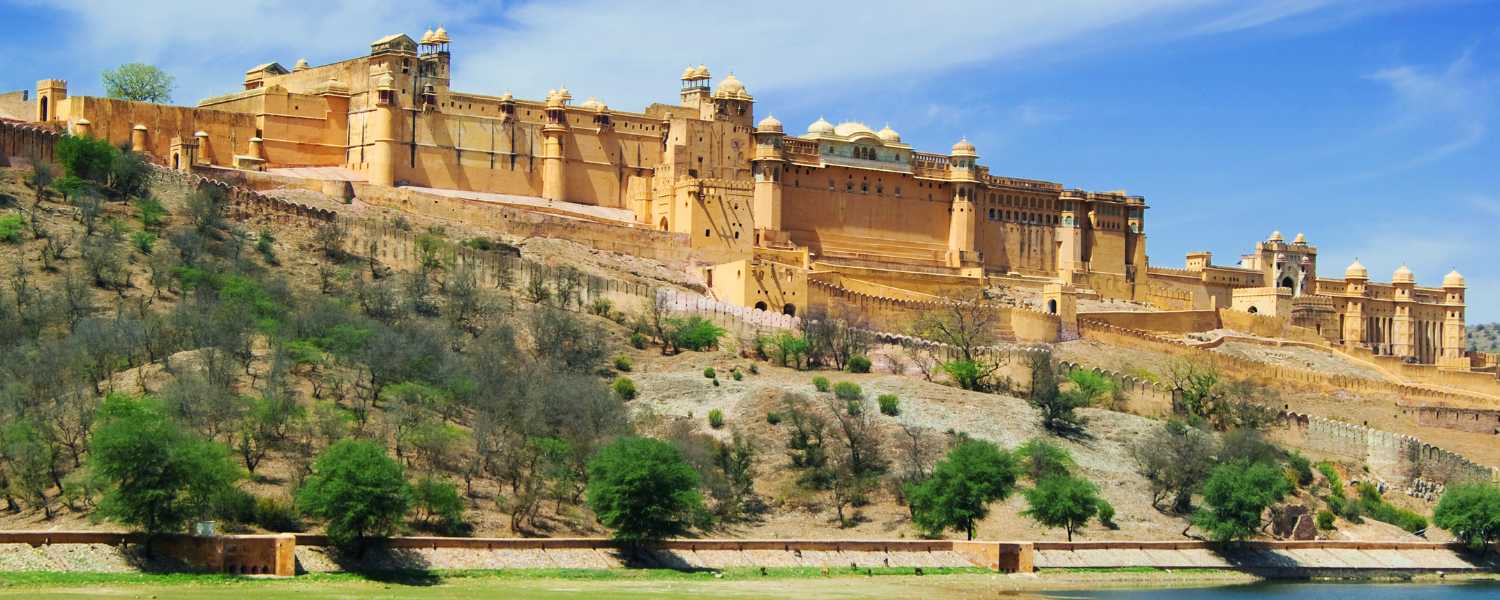
While Perched on Jaipur’s rugged hills, the Amber Fort unfolds like a magical storybook. Further, the imposing fort, constructed with white marble and red sandstone, exudes an old-world charm that transports visitors to a bygone era.
Although, the Sheesh Mahal within the fort, adorned with intricate mirror work, reflects the glimmering essence of the Pink City of India.
The panoramic views from the fort’s ramparts offer a breathtaking panorama of the surrounding Aravalli hills, adding to the allure of this historical gem.
As we traverse the landscape of the Pink City, our journey leads us to the enchanting Amber Fort, a hillside citadel that echoes with tales of royalty and grandeur.
Moreover, the fort, built with a magnificent blend of white marble and red sandstone, rises like a rose-tinted mirage against the backdrop of the Aravalli hills.
The pink hues of Amber Fort harmonize with the natural landscape, creating a visual spectacle that encapsulates the spirit of the Pink City of India.
Further, with its intricate architecture, sprawling courtyards, and the ethereal Sheesh Mahal adorned with mirrors, Amber Fort is a quintessential gem that embellishes the crown of Jaipur’s historical treasures.
5. Jal Mahal: Serenity Amidst the Waters

As we continue our exploration, the Jal Mahal emerges as a serene jewel amidst the waters of Man Sagar Lake.
The palace’s pink sandstone architecture, reflected in the lake’s calm surface, creates a mesmerizing sight. While only the top floor of Jal Mahal is visible, the palace is a poetic representation of the city’s affinity for blending architecture with nature.
Surrounded by the Aravalli Hills, Jal Mahal adds a touch of tranquillity to the vibrant palette of the Pink City of India.
Jal Mahal, nestled in the serene waters of Man Sagar Lake, reflects its pink sandstone beauty in the clear lake. The reflection becomes a poetic dance of colours, an ode to the union of architecture and nature.
6. Nahargarh Fort: Guardian of the Pink City
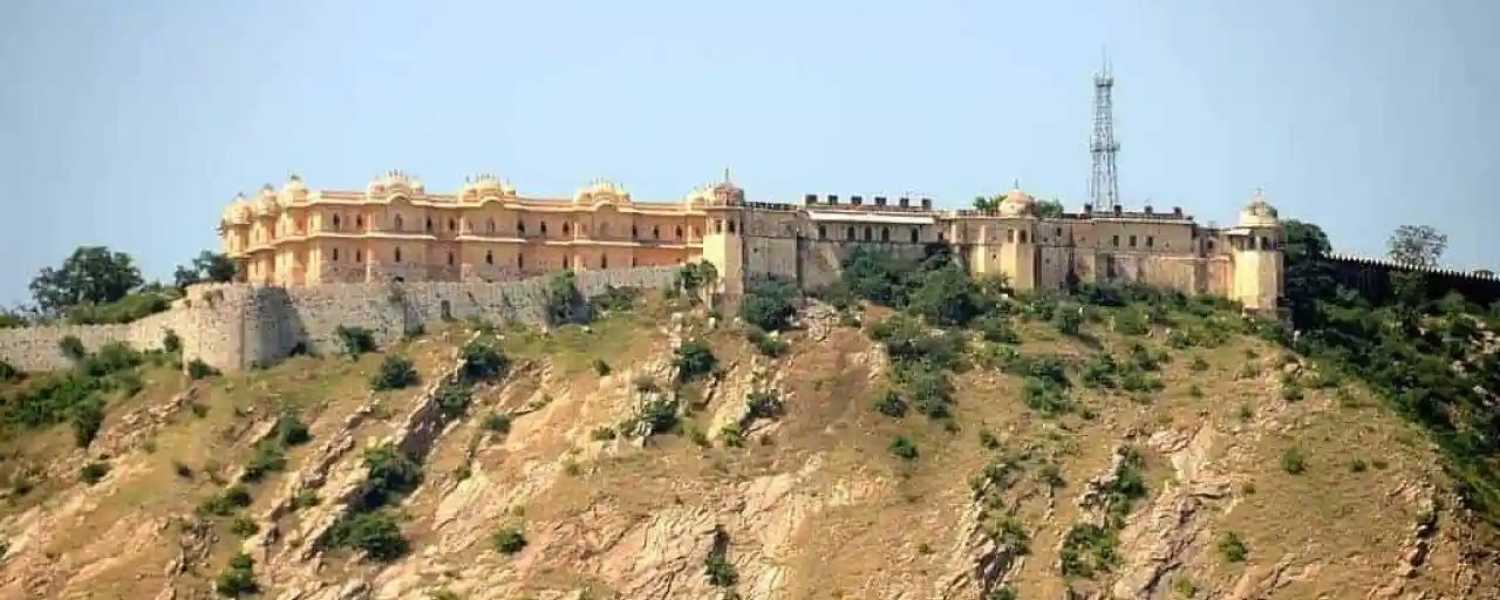
Perched on the rugged Aravalli hills, Nahargarh Fort is the guardian of the Pink City of India. Built as a defensive fort on the advice of a spiritual saint named Nahar Singh, the fort offers panoramic views of Jaipur’s landscape.
The pink hues of the city extend to the walls of Nahargarh, creating a seamless connection between the fortress and the city it watches over.
The fort’s ambiance and historical significance make it an integral part of Jaipur’s architectural legacy.
Nahargarh Fort, perched on the Aravalli Hills, watches over the city with its pink ramparts, merging seamlessly with the rugged landscape.
These natural gems echo the city’s commitment to preserving its identity, even in the embrace of the picturesque outdoors.
7. Albert Hall Museum: A Cultural Repository

Our journey through the cultural gems of Jaipur leads us to the Albert Hall Museum, a treasure trove of artistic brilliance.
With its distinctive pink hue, the museum houses a collection of antiques, including portraits, statues, and decorative arts.
The architectural splendour of the museum, designed by Sir Samuel Swinton Jacob, complements the cultural richness within.
It serves as a testament to Jaipur’s commitment to preserving and showcasing its cultural heritage in a shade that mirrors the city’s identity in pink.
The Albert Hall Museum, with its distinctive pink hue, houses artifacts that narrate the region’s cultural tapestry.
8. Jaigarh Fort: The Fort of Victory
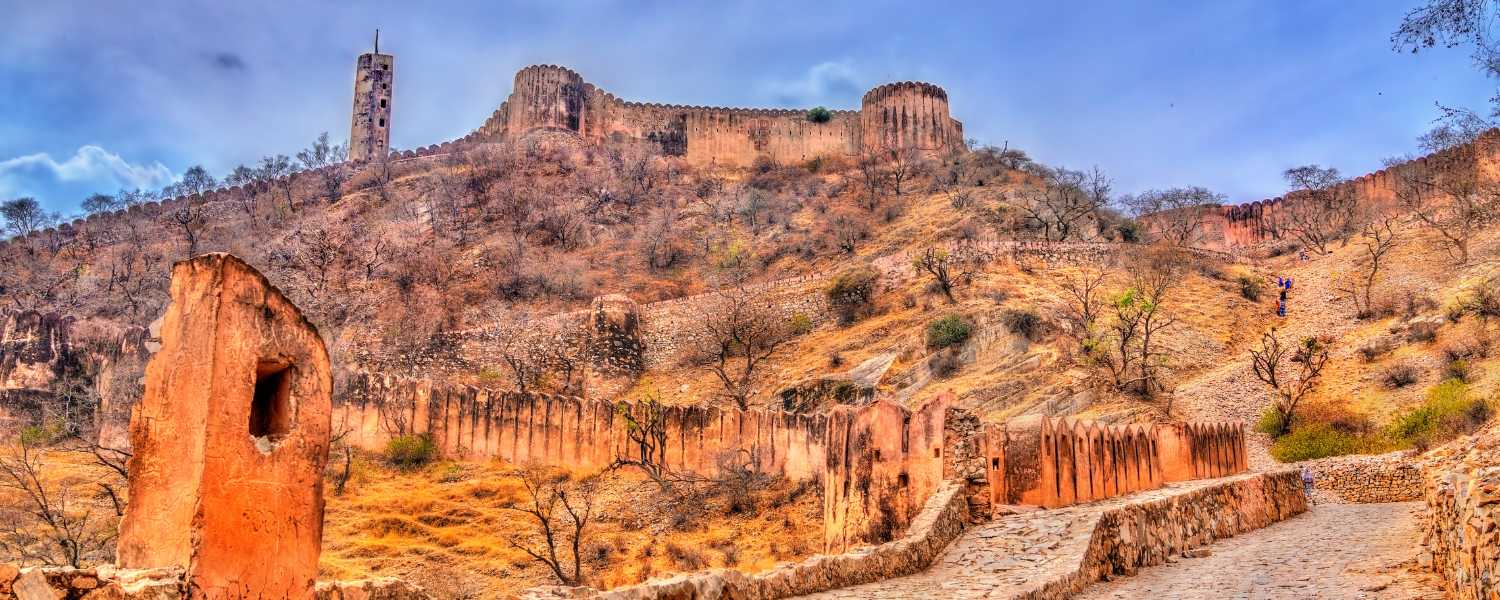
Jaigarh Fort, standing tall on the Cheel ka Teela (Hill of Eagles), complements the architectural brilliance of Amber Fort.
The fort, also known as the Fort of Victory, is home to the world’s largest cannon on wheels, Jaivana. The expansive fortifications, built with pink sandstone, offer a commanding view of the surrounding landscape.
Jaigarh Fort, echoing the military prowess of its time, is a historical gem contributing to the formidable allure of the Pink City of India.
Perched proudly on the rugged Aravalli hills, Jaigarh Fort is the formidable guardian of the Pink City of India.
With imposing walls crafted from the same pink sandstone gracing the city below, this fort is a majestic spectacle of military prowess and architectural grandeur.
The strategic location offers panoramic views of Jaipur’s landscape, seamlessly blending the fort’s pink ramparts with the natural hues of the surrounding terrain.
9. Birla Mandir: Tranquility in Marble

While, in the heart of Jaipur, the Birla Mandir stands as a tranquil oasis. This modern architectural marvel, built with white marble and adorned with pink sandstone sculptures, reflects the city’s blend of tradition and modernity.
The temple to Lord Vishnu and Goddess Lakshmi glows ethereally in the night, casting a serene light that adds to the spiritual ambiance of the Pink City of India.
Birla Mandir, a modern marvel in white marble adorned with pink sandstone sculptures, symbolizes the city’s blend of tradition and modernity.
These cultural gems are not just structures but living repositories that encapsulate the essence of the Pink City’s cultural wealth.
10. Sisodia Rani Ka Bagh: Blooms of Romantic Bliss
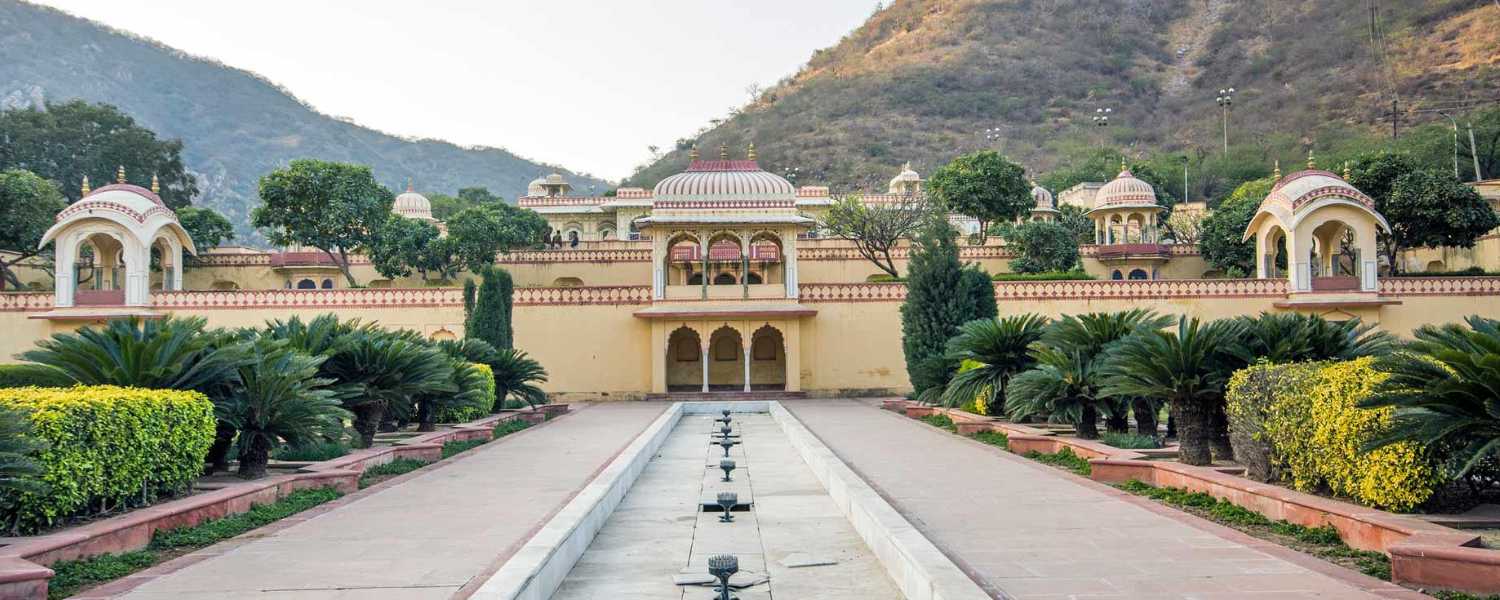
Our journey through the enchanting Pink City of India takes an added detour to the Sisodia Rani Ka Bagh, a paradisiacal haven that unfolds tales of romance and botanical splendour.
This garden is a mesmerizing blend of Mughal and Rajput architectural styles, commissioned by Maharaja Sawai Jai Singh II for his second queen, Sisodia Rani.
The pink-hued pavilions and cascading terraces reflect the romantic essence of its creation.
Sisodia Rani Ka Bagh, adorned with vibrant flowers and fragrant shrubs, becomes a living canvas during the blooming season, painting the garden with a riot of colours.
The intricate water channels and fountains add a soothing melody to the surroundings, creating an ambience that brings visitors to an era of regal romance.
The pink architecture harmonizes with the natural beauty, making Sisodia Rani Ka Bagh an essential gem in the Pink City’s crown.
11. Jai Mahal Palace: Elegance in Pink

Our journey through the Pink City brings us to the regal abode of Jai Mahal Palace, a masterpiece that embodies elegance in pink.
Nestled amidst 18 acres of landscaped Mughal gardens, this architectural gem showcases the fusion of Indo-Saracenic and Mughal styles.
Additionally, the palace, with its pink-hued façade, is a testimony to Jaipur’s tradition of blending luxury with the hues that define its identity.
As you explore the opulent interiors and stroll through the manicured gardens, Jai Mahal Palace emerges as a shimmering jewel in the crown of the Pink City.
While, pink sandstone façade of Jai Mahal Palace, adorned with ornate carvings and delicate detailing, adds to the luxury synonymous with Jaipur’s regal heritage.
The palace hosts restaurants with a symphony of flavours, ranging from traditional Rajasthani cuisine to international delicacies.
Whether dining under the stars in the palace courtyard or enjoying a meal in the grand dining halls, guests are enveloped in an atmosphere reflecting Jaipur’s rosy charm.
Although, it becomes a luxurious retreat and a living testament to the city’s commitment to preserving its heritage in the most opulent shades of pink.
Moreover, as the palace gates open, guests are invited to enter a world where tradition meets luxury, creating an enduring legacy of elegance in the Pink City of India.
12. Govind Dev Ji Temple: Devotion in Rosy Splendor
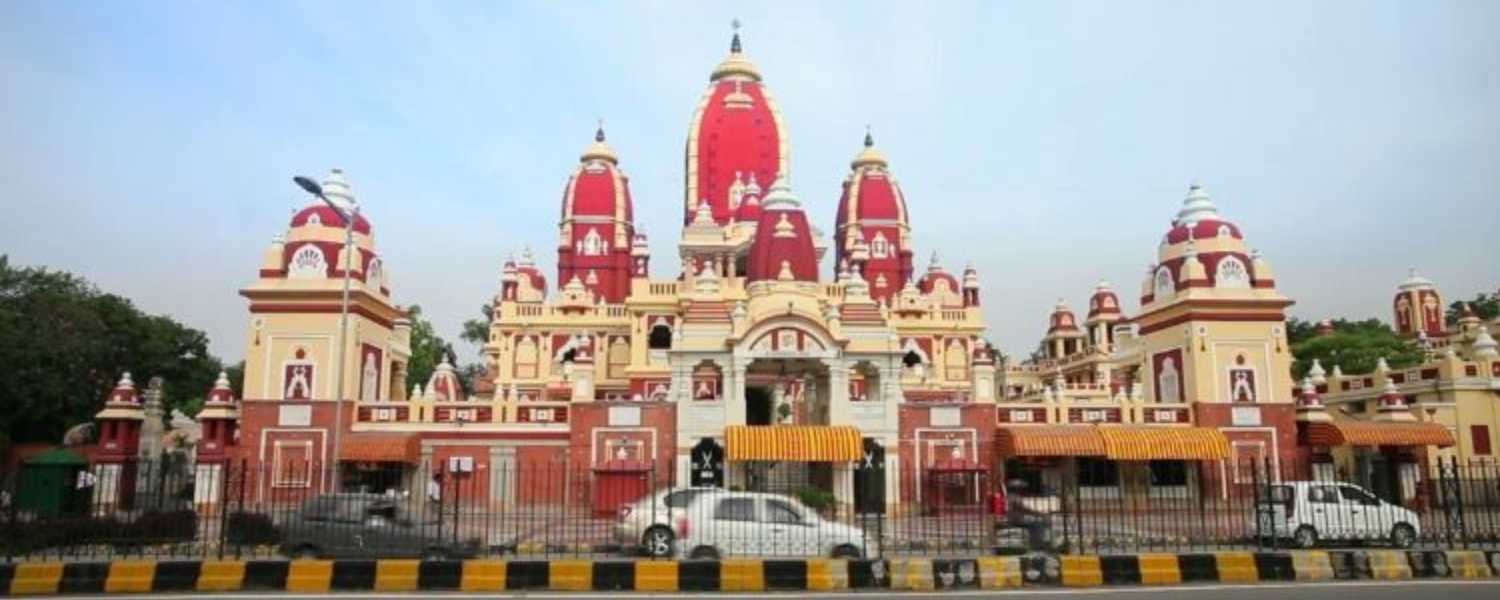
Additionally, our journey takes a spiritual turn as we visit the Govind Dev Ji Temple, where devotion is painted in rosy splendour.
Dedicated to Lord Krishna, this temple, located within the City Palace complex, is a divine masterpiece adorned with pink sandstone.
However, the spiritual ambiance is heightened as the idols of Govind Dev Ji and Radha Rani are revered against the backdrop of intricate pink architecture.
The temple becomes a spiritual retreat, inviting worshippers and visitors alike to experience the divine in the heart of the Pink City.
Although is Dedicated to Lord Krishna, the temple is a harmonious blend of spiritual sanctity and architectural elegance, with its façade adorned in the distinctive pink sandstone that defines the city.
As the faithful gather in the courtyard, the pink hues of the temple walls create an atmosphere of divine resonance.
Moreover, the Govind Dev Ji Temple is not just a religious tower; it is a testament to the city’s commitment to infusing every aspect of life, even spirituality, with the signature colour that paints the identity of the Pink City.
Conclusion
However, as our journey through the Jaipur gems comes to a close, the vivid hues of the Pink City of India linger in our minds.
Each architectural marvel, historical fort, and cultural repository we explored has added a layer to the rich tapestry of Jaipur’s heritage.
However, the amalgamation of pink sandstone, historical significance, and architectural brilliance creates a cityscape that is visually stunning and resonates with the tales of a regal past.
While, Jaipur, the Pink City of India, is more than a city; it is a testament to the vision of its founders, the resilience of its heritage, and the vibrancy of its culture.
Each gem we uncovered reflects the city’s identity, mirroring the hues of its walls and the warmth of its hospitality.
The journey through Jaipur’s architectural wonders is an exploration of a city that is not bound by time; it is a timeless gem that continues to sparkle in the heart of Rajasthan, inviting visitors to immerse themselves in its royal embrace.
As our exploration of Jaipur’s gems draws close, the Pink City of India emerges as a canvas adorned with architectural masterpieces, historical wonders, and cultural treasures.
Each must-see place we ventured into is a testament to the city’s royal past, artistic finesse, and unwavering commitment to preserving its vibrant heritage.
In this conclusion, we reflect on the kaleidoscope of experiences woven into the Pink City of India fabric.
In concluding our odyssey through the Jaipur gems, we unravel a tapestry of timeless elegance in the Pink City of India.
Jaipur stands as a living testament to the vision of its founders, where every monument, fort, and garden reflects the city’s identity in shades of pink.
The architectural brilliance, historical significance, and cultural richness of each must-see place contribute to the enduring charm of the Pink City of India.
For more places to visit in Jaipur-related blogs subscribe to us now!
